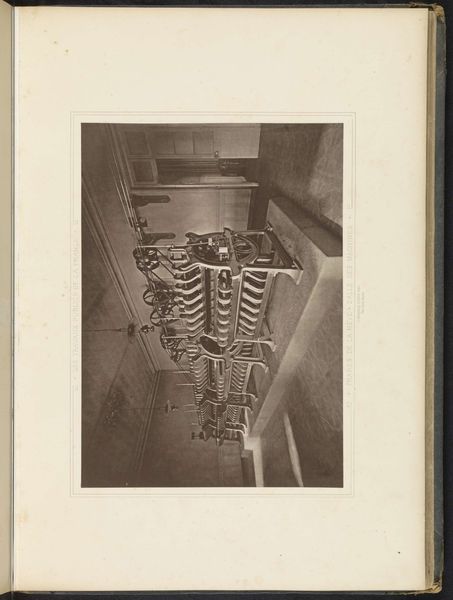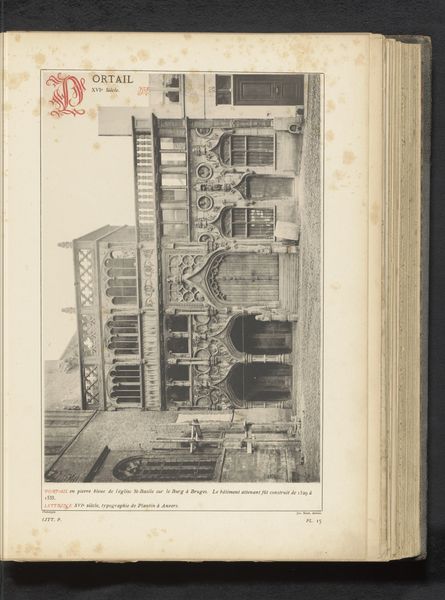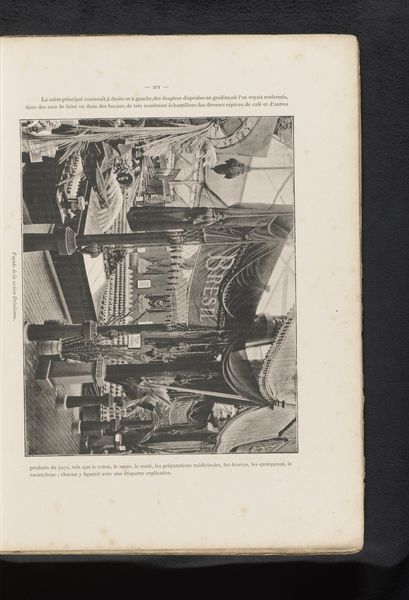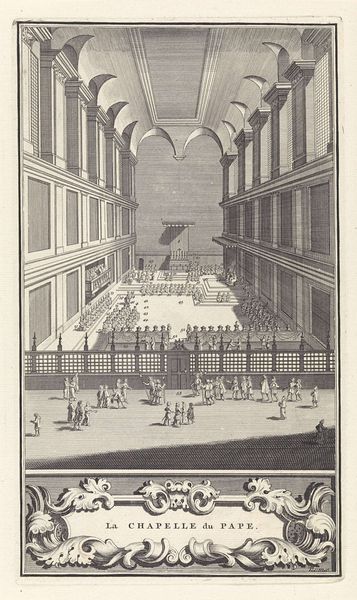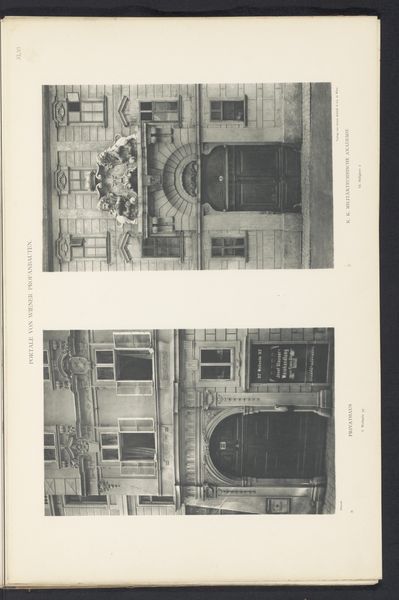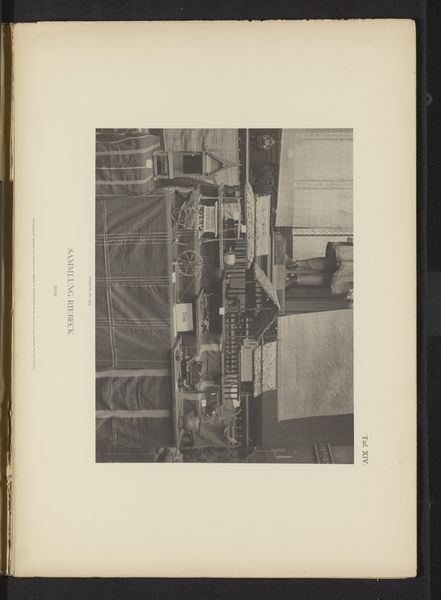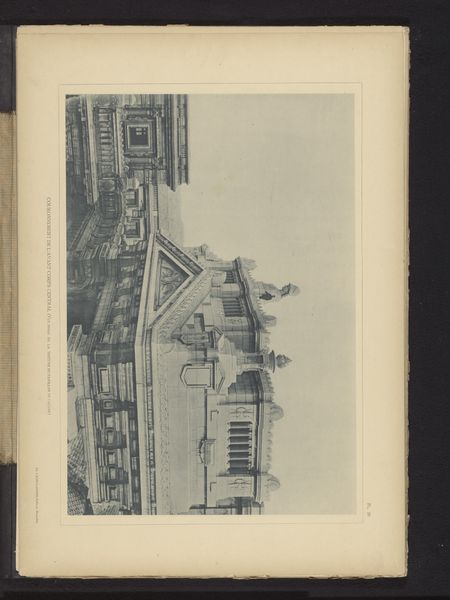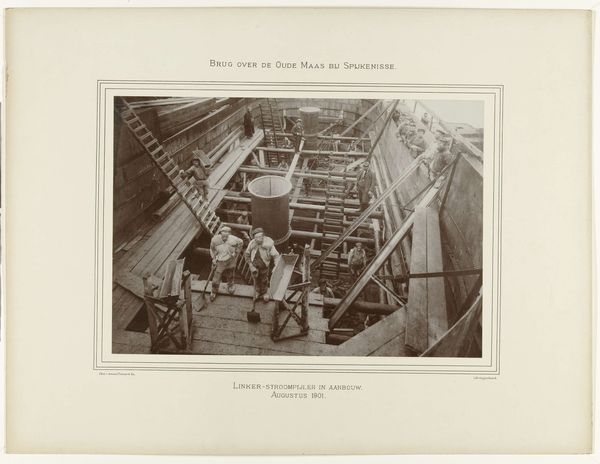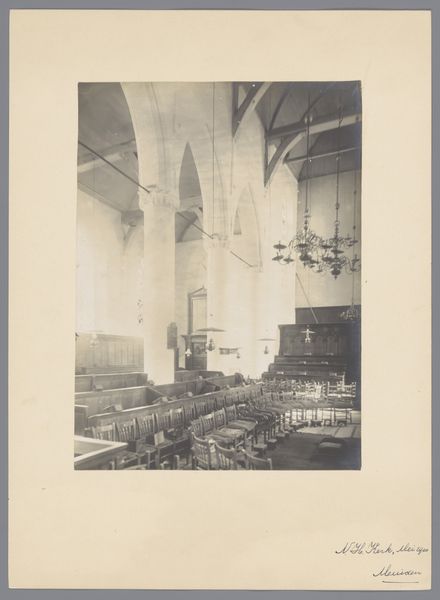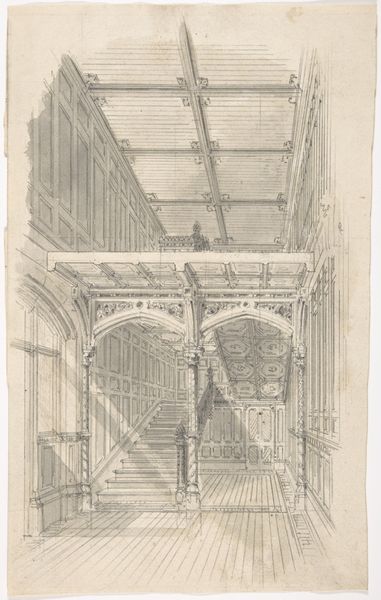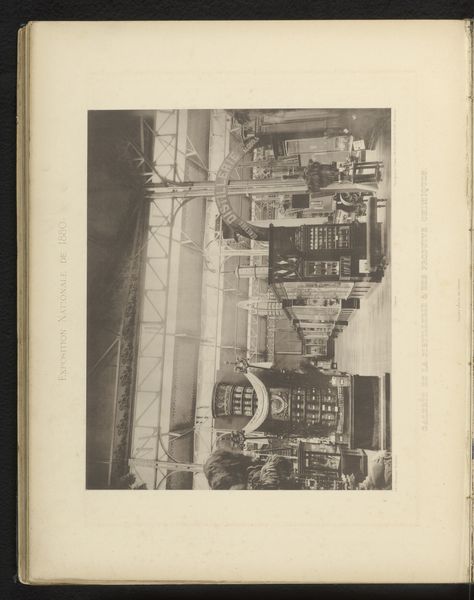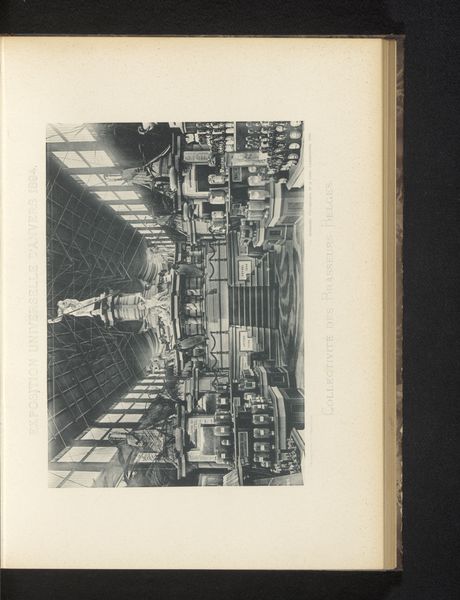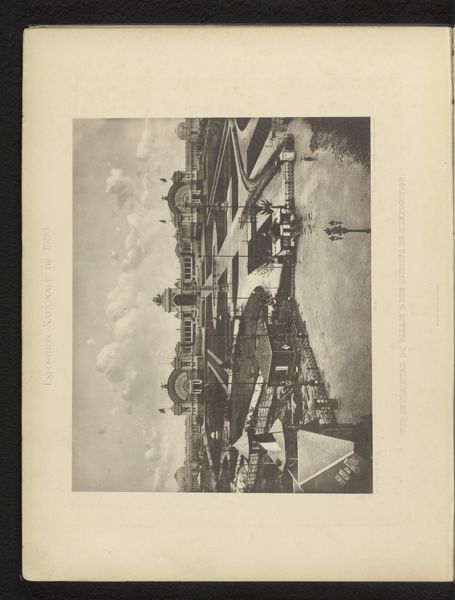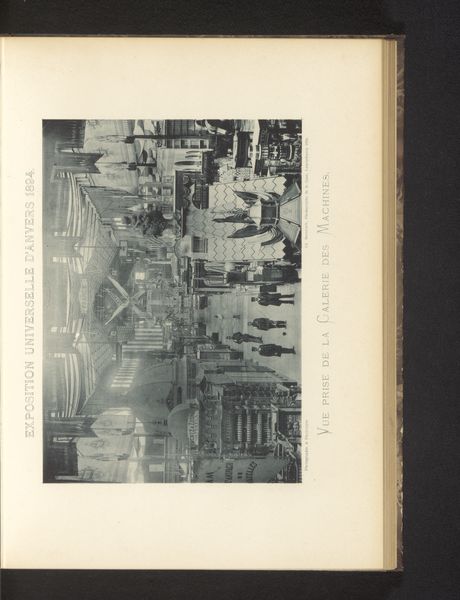
drawing, print, pencil
#
drawing
# print
#
pencil sketch
#
geometric
#
pencil
#
cityscape
#
realism
Dimensions: image: 503 x 317 mm sheet: 578 x 403 mm
Copyright: National Gallery of Art: CC0 1.0
Curator: What a wonderfully evocative image. This is "Park Avenue," a pencil drawing, or perhaps a print made from one, by Joseph Webster Golinkin, dating to around 1928. Editor: It has a slightly haunting feel. All sharp angles and looming presences under a somber sky. The light barely touches anything. It's quite powerful in its starkness. Curator: It's certainly a piece rooted in its time. Think of the Roaring Twenties, the celebration of modernity coupled with anxieties about urban growth and its impact on society. The cityscape emerged as a potent symbol of both progress and alienation. The buildings aren’t only buildings but also expressions of societal aspiration, wealth, and power, literally towering above the observer. Editor: Yes, the symbolism of the architecture, absolutely. Note how the tallest building, almost skeletal in its rendering, dominates the frame, an emblem perhaps of the era's ambition but also of its potential for hubris. There's something about the repetition of vertical lines that speaks of an almost relentless drive upward. The vehicles are depicted with the same vertical strokes. Curator: Precisely. The city itself became an emblem of American aspirations and global power. What's interesting, too, is considering who got to represent this image, to visualize Park Avenue for a wider public. What social class is on display here? What kind of narrative are they imposing through this medium? Editor: There's a certain distance maintained. Despite the activity depicted, the viewer feels like an outsider looking in, separated from the figures on the street. And note how few figures there actually are. Everything feels sparse, like a stage set before the actors arrive. Perhaps there is a warning about a certain kind of progress, where human figures and scales seem dwarfed. Curator: These depictions, for better or worse, shape how future generations understand not just Park Avenue, but also a very specific period in New York’s evolution, defining cultural attitudes towards urban centers, and shaping perceptions about them to this day. Editor: Looking at "Park Avenue," I feel a mix of awe and unease. It's a compelling visual document, less a straightforward depiction of a place and more a representation of cultural ambition that hasn’t altogether aged gracefully. Curator: Yes, it definitely leaves us considering who benefited from such rapid expansion. Thank you, it's important to have pieces that question such themes for the viewer.
Comments
No comments
Be the first to comment and join the conversation on the ultimate creative platform.
